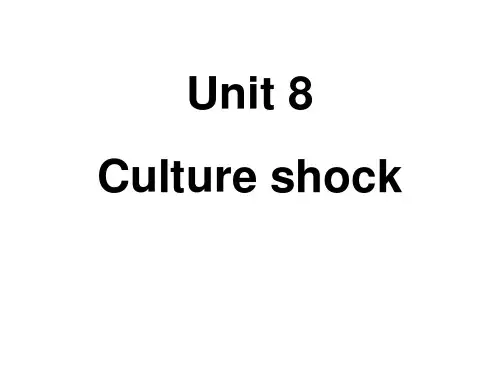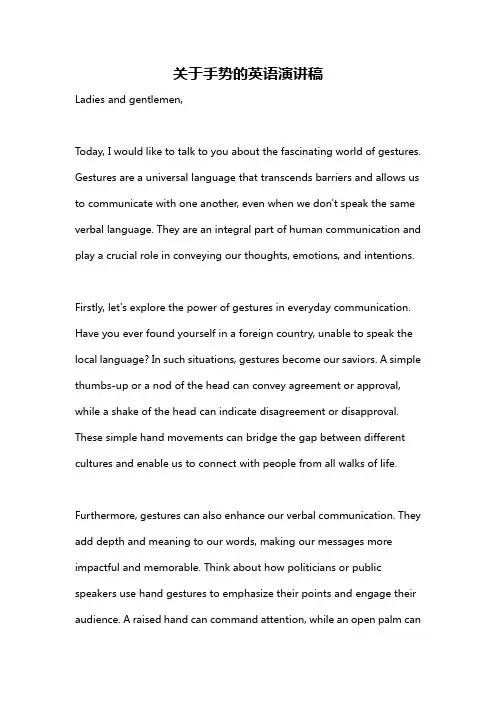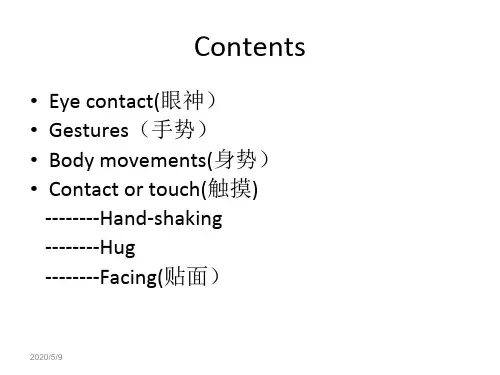文化休克—手势(英文PPT+讲稿)
- 格式:ppt
- 大小:1.76 MB
- 文档页数:14





关于手势的英语演讲稿Ladies and gentlemen,Today, I would like to talk to you about the fascinating world of gestures. Gestures are a universal language that transcends barriers and allows us to communicate with one another, even when we don't speak the same verbal language. They are an integral part of human communication and play a crucial role in conveying our thoughts, emotions, and intentions.Firstly, let's explore the power of gestures in everyday communication. Have you ever found yourself in a foreign country, unable to speak the local language? In such situations, gestures become our saviors. A simple thumbs-up or a nod of the head can convey agreement or approval, while a shake of the head can indicate disagreement or disapproval. These simple hand movements can bridge the gap between different cultures and enable us to connect with people from all walks of life.Furthermore, gestures can also enhance our verbal communication. They add depth and meaning to our words, making our messages more impactful and memorable. Think about how politicians or public speakers use hand gestures to emphasize their points and engage their audience. A raised hand can command attention, while an open palm cansignify honesty and transparency. By incorporating gestures into our speech, we can effectively convey our emotions and intentions, making our communication more authentic and persuasive.Moreover, gestures are not limited to hand movements alone. Facial expressions, body postures, and even eye contact are all forms ofnon-verbal communication that contribute to our overall message. A smile can express warmth and friendliness, while crossed arms can indicate defensiveness or disagreement. These non-verbal cues often speak louder than words and provide valuable insights into a person's true thoughts and feelings.However, it is important to note that gestures can also vary across different cultures. What may be considered a friendly gesture in one culture could be offensive in another. For example, the "OK" sign made by forming a circle with the thumb and index finger is commonly used to indicate approval in Western cultures. However, in some countries, such as Brazil or Turkey, it is considered an offensive gesture. Therefore, it is crucial to be mindful of cultural differences and to educate ourselves about the appropriate gestures when interacting with people from different backgrounds.In conclusion, gestures are a powerful tool in human communication. They enable us to connect with one another, enhance our verbal communication, and convey our thoughts and emotions. Whether it's a simple thumbs-up or a complex dance routine, gestures have the ability to transcend language barriers and bring people together. So, let's embrace the universal language of gestures and use them to foster understanding and unity in our increasingly diverse world.Thank you.。





